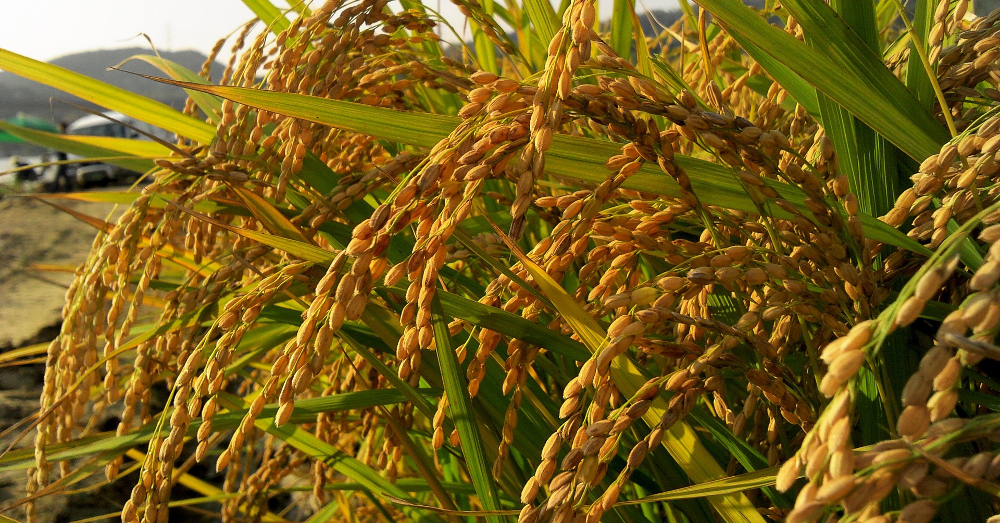
GMO Golden Rice Is Fake News Propaganda
It’s been more than 20 years since Golden Rice has become a focus of research, but there’s still nothing to show for it. Indian researchers looking to create a form of Golden Rice that could be grown in India introduced the engineered DNA to a high-yielding variety called Swarna. Yields of a GE “Golden Rice Swarna” were just one-third that of the non-GE variety, and root and shoot defects were apparent.
November 14, 2017 | Source: Mercola.com | by Dr. Joseph Mercola
In 2000, genetically engineered (GE) Golden Rice made the cover of Time magazine, which used the compelling headline, “This rice could save a million kids a year.” In theory, it sounded like a promising idea: Create rice that contains beta-carotene, which would then be converted into vitamin A when eaten. Vitamin A deficiency is a public health problem in more than half of countries across the globe, particularly in Africa and Southeast Asia, according to the World Health Organization (WHO).2
Not only is vitamin A deficiency, which affects an estimated 250 million preschool children, the leading cause of preventable blindness in children, but it also increases the risk of severe infections and related deaths, WHO notes. Solving the problem of vitamin A deficiency could indeed prove to be lifesaving on a monumental level — on this, everyone agrees. But major controversy has arisen over tackling vitamin A deficiency with Golden Rice, as time has shown this GE product has failed miserably at living up to its promises.
Golden Rice Fails to Deliver
It’s been more than 20 years since Golden Rice has become a focus of research,3 but there’s still nothing to show for it. And there were problems from the beginning. The first Golden Rice (GR1) failed, as it contained too little beta-carotene to even make a dent in vitamin A deficiency.4 The next version (GR2), developed by biotech giant Syngenta, is still in field trials.
“The vast majority of scientists in the world will never see such comprehensively generous support for their research — yet they still deliver, and must deliver if they ever want to renew funding for their research. This is more than can be said for the golden rice project,” Independent Science News reported.5
Indeed, both common sense and science suggest the project was doomed to fail from the start. For starters, proponents often cite a 2009 study that found Golden Rice is an effective source of vitamin A, because it “is effectively converted to vitamin A” in healthy adult volunteers.6
The latter part is important, because the people who would be depending on Golden Rice are, for the most part, not healthy adults, nor would they have regular access to key nutrients needed to absorb vitamin A, like fat. So there are major questions of whether consuming Golden Rice, even if it contains high enough levels of beta-carotene, would alleviate vitamin A deficiency in people without adequate levels of dietary fat. Other key questions also remain to be answered, like:7
• Does beta-carotene in Golden Rice degrade during storage?
• Do the beta-carotene levels remain the same when seeds are saved year after year?
• How much beta-carotene remains after cooking?
• What are the environmental risks?
In addition, it’s overly simplistic to assume that engineering one part of a plant would occur in a bubble, without influencing other parts. As GM Watch explained, it’s even possible that the high levels of beta-carotene in the rice could end up backfiring in a way:8
“A study published in 20129 showed that beta-carotene (a precursor to Vitamin A that’s been engineered into Golden Rice) is processed into a number of compounds, not just Vitamin A. Some of these compounds actually block the action of Vitamin A. The authors of the study said this may have implications for Golden Rice: ‘A concern is that if you engineer these crops to have unusually high levels of beta-carotene, they might also have high levels of these [Vitamin A-blocking] compounds.’”
Golden Rice Leads to ‘Metabolic Meltdown,’ Poor Yields
On an agronomic level, Golden Rice is also extremely problematic. Indian researchers looking to create a form of Golden Rice that could be grown in India introduced the engineered DNA to a high-yielding variety called Swarna. The resulting “GR2-R1” crop was “dwarf with pale green leaves and drastically reduced panicle [flower cluster] size, grain number and yield as compared to the recurrent parent, Swarna.”10
Yields of the GE “Golden Rice Swarna” were just one-third that of the non-GE variety, and root and shoot defects were apparent. “The plants also flowered later, were half the height, and half as fertile,” The Cornucopia Institute reported, adding:11
“DNA analysis revealed a partial explanation for these defects. The GR2-R1 DNA had inserted into and disrupted a native rice gene called OsAux1. OsAux1 specifies a transporter for the important plant hormone auxin. The researchers suggested this disruption explains some of the root and shoot defects.”
In addition, some of the engineered genes were found to have enzyme products functioning in the leaves of the plants, even though they had been engineered to only function in the grains. Cornucopia continued:12
“Chemical analysis of leaves, stems and flowering parts showed GR2-R1 plants had altered levels of three other key plant hormones: abscisic acid (ABA), gibberellin (GA3), and cytokinin.
To explain this the researchers proposed that the presence of the genetically engineered … enzymes in leaves depletes a compound (GGDP) needed to make other plant biochemicals, in particular hormones and chlorophylls. Lack of chlorophyll would explain the pale leaves, while altered hormone levels would explain the other growth defects and the yield loss seen … ”
